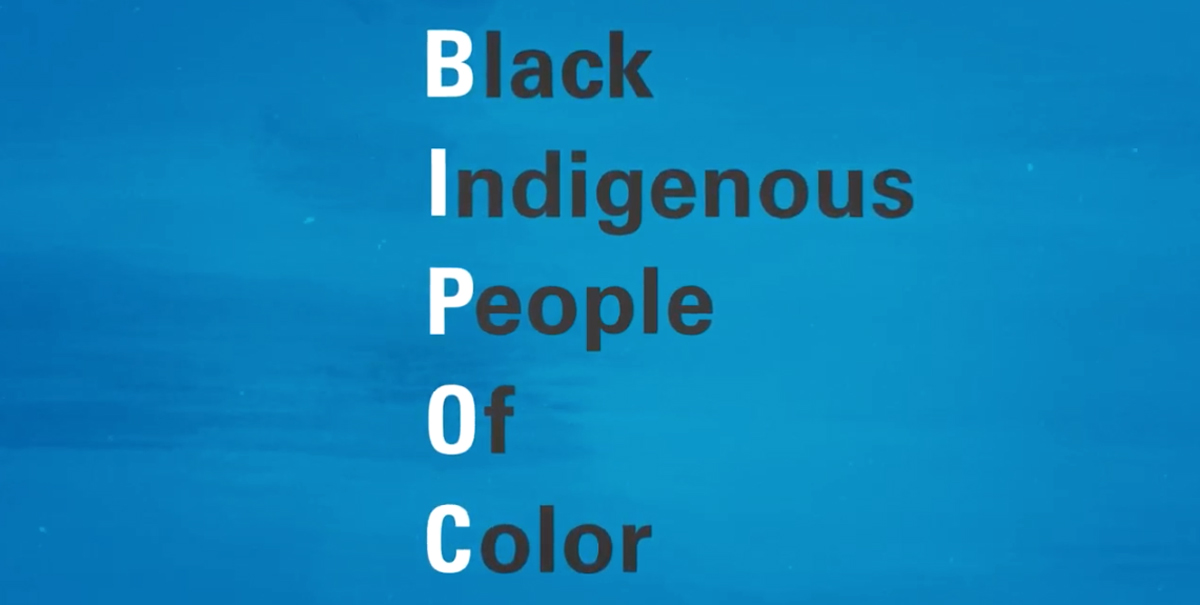BIPOC
BIPOC stands for Black, Indigenous, people of color.
It is meant to include all people of color in the work for liberation, while acknowledging that not all people of color face the same levels of injustice. In the United States, Black and Indigenous people have a unique experience of systemic racism.
Using the term BIPOC is an attempt to recognize how Black and Indigenous people have, and continue to be, impacted by slavery and genocide, while also honoring the ongoing resistance to colonization and White supremacy.
WHAT IS THE ORIGIN OF THE TERM “BIPOC”?
To understand the term “BIPOC” it’s best to look back at the origins of the term “people of color” first. It was first cited in The Oxford English Dictionary in 1796 and is often abbreviated as POC. It initially referred to people of mixed African and European heritage who were freed from slavery in the Americas. Originally, the term was equivalent with “colored” in American English, which gradually referred only to African Americans, and is considered a racial pejorative.
In the late 1970s, the term “person of color” was reintroduced to counter the condescension implied by the common terms “non-white” and “minority.” In 1977, at the National Women’s Conference, the organizers developed an action agenda for minority women. A group of Black women from Washington D.C. thought the agenda was inadequate and developed their own, which they called the Black Women’s Agenda. Other minority women attending wanted to be included in the agenda as well. This required a more inclusive title for the agenda, and the term “Women of Color” was formally adopted.
Through the 1980s and 1990s, the term “of color” proliferated to describe people not of European descent. And some consider it an attractive term because it unites racial and ethnic groups into a larger collective in solidarity with one another.

The acronym “BIPOC,” referring to Black, Indigenous, people of color, first appeared around 2013 in social media. The term seeks to emphasize the historic oppression of Black and Indigenous peoples, which is argued to be distinctive in U.S. history at the collective level. In 2020, the term gained momentum and popularity as racial justice awareness grew in the United States in the wake of George Floyd’s murder.
CRITICISM FOR THE TERM “BIPOC”
While the term seeks to be inclusive and call out the unique experiences of Black and Indigenous Peoples, it has been criticized for being exclusive to other groups and overly simplistic. For example, in 2020, hate against Asian American and Pacific Islander (AAPI) communities rose as a racist reaction to the COVID-19 pandemic. Simultaneously, the term “BIPOC” was rising in popularity in the public discourse following the murder of George Floyd. Though the term was already criticized for being exclusionary, it was amplified during 2020 due to the fact that AAPI were lumped into the indiscriminate category “of color.”
Additionally, there is criticism from the White Hispanic, Latin American and Spaniard communities that the term “people of color” does not accurately describe them.
WHEN TO STAY GENERAL AND WHEN TO GET SPECIFIC
The term “BIPOC” can be used to describe the collective group of people who are not considered “white” in the United States and have collectively experienced systemic racism. Though it is acceptable to use in some instances, it is preferred to refer to communities and individuals as their specific cultural and ethnic identity (e.g., Black, Hmong, Somali, Columbian) rather than as part of an indiscriminate homogenous group.
While the umbrella term of BIPOC can be applicable in certain instances, it does not capture the unique lived experiences of individuals and communities.
There is no singularly correct way to refer to an individual or group’s race, ethnicity, or culture. People are not a monolith and tremendous diversity exists, even within specific communities. For example, Indigenous is an all-encompassing term used to refer to those who descended from the original inhabitants of an area prior to colonization by settlers. Indigenous peoples belong to distinct cultural groups that existed long before modern states were created, and current borders defined. There are 574 distinct federally recognized tribal nations in the United States alone, each with their own unique language, governance system, spirituality, and cultural customs.
While the umbrella term of BIPOC can be applicable in certain instances, it does not capture the unique lived experiences of individuals and communities. Being specific and asking what people would like to be called is best practice.
Reflect
- Have you used “BIPOC” or “POC” before? How can you refer to individuals and communities more specifically in the future?
- Have you ever been misidentified culturally, ethnically, or in some other way?
- Do you have a sense of belonging in your community, and do you feel that the needs of your community are seen and addressed?
















